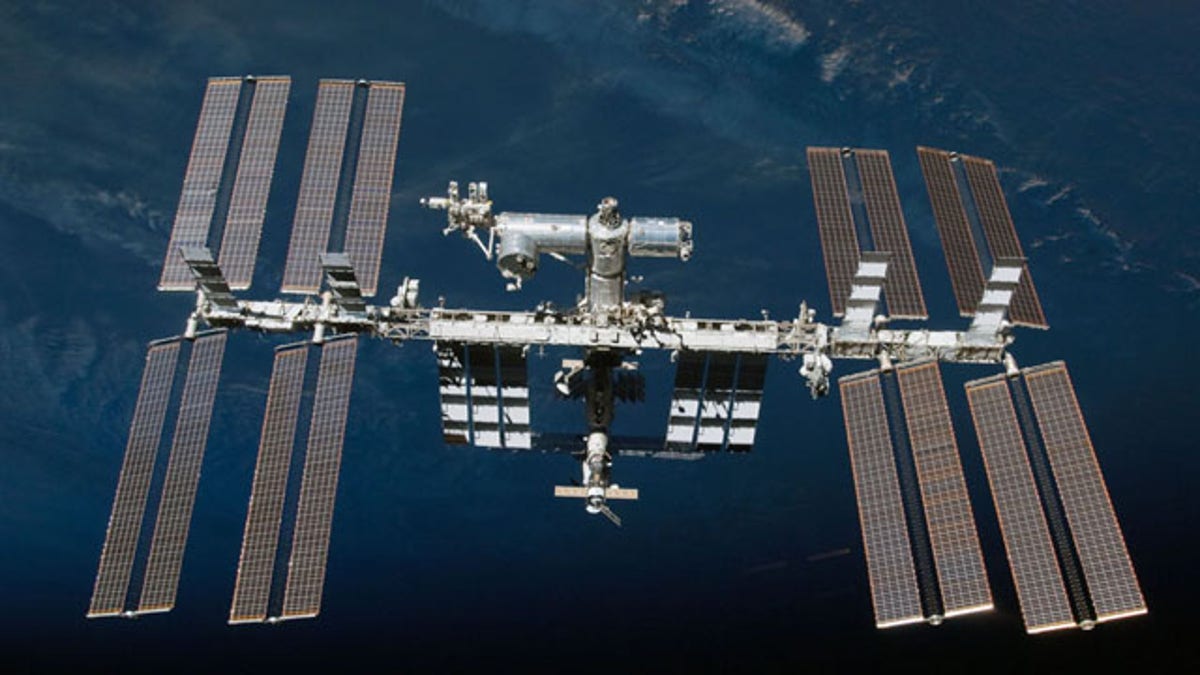
(NASA)
INTERNATIONAL SPACE STATION – The International Space Station got a sorely needed storage room Tuesday, a 21-foot-long supply closet packed with goods and a humanoid robot that will remain boxed up for another two months.
The space station and space shuttle crews teamed up to attach the newest module, using a hefty robot arm to anchor it down. It became the 13th room at the sprawling outpost, and the only one devoted entirely to storage.
Built in Italy, the new compartment is named Leonardo, after Leonardo da Vinci.
As Leonardo was bolted into place, the shuttle-station complex soared more than 200 miles above Turin, Italy.
"So far, Leonardo's looking very, very happy to be in his or her new home," said space station astronaut Catherine Coleman.
"It's a big day for us," added Discovery crewman Michael Barratt, "and for Italy, one of the greatest contributions to spaceflight next to Paolo Nespoli."
Nespoli is among the six-person station crew.
Leonardo flew seven times to the space station as a temporary cargo carrier, but always returned on the shuttles. This time, it's staying for the duration. Storage space is at a premium, and Leonardo will provide some relief during the next decade.
The absence of visiting shuttles after this summer will make it harder to clear out the space station. Every time a shuttle returns from the station, it's loaded down with trash and discarded items.
Space station commander Scott Kelly thanked Mission Control for the new storage unit. "It's much needed," he said.
The robot delivered inside Leonardo -- Robonaut 2, better known as R2 -- will have to wait until May before being unpacked and tested as a potential astronaut helper. The space station residents are swamped with other chores during this week's visit by Discovery, and Endeavour will be along in April, meaning the robot will stay put for a couple more months.
"So far, space is great -- but I suspect it will be even better once I'm out of my box!" R2 said in a Twitter update.
The world's first humanoid in space cannot speak and certainly can't write or post tweets. Human colleagues on the ground are taking care of the Twitter end of things, however, attracting a following of more than 30,000 to AstroRobonaut, the robot's tweep name.
Discovery's mission has been extended a day and will now last 12 days. It's the last flight for NASA's oldest shuttle, which will be retired when it lands next Tuesday and eventually displayed at the Smithsonian Institution.
Leonardo was the last pressurized module to be delivered by a shuttle.
Only two other shuttle flights remain. Endeavour will deliver a major science instrument for the station's exterior, and Atlantis will drop off one last load of spare parts and supplies to keep the outpost going until 2020.
On Tuesday, NASA's mission management team nixed a plan to send a three-man Russian Soyuz capsule on a photo-taking lap around the space station. There never have been so many countries' vessels parked there at the same time, and it will never happen again given the impending retirement of the shuttle fleet.
The Russian Space Agency recommended the operation be scrapped for safety reasons; engineers were uncomfortable with putting the new Soyuz model through maneuvers it has not previously tested.
Kenny Todd, management team leader, said all of the major partners, Russia included, were disappointed they weren't going to get "the photograph for the ages." It was a unanimous decision, though.
